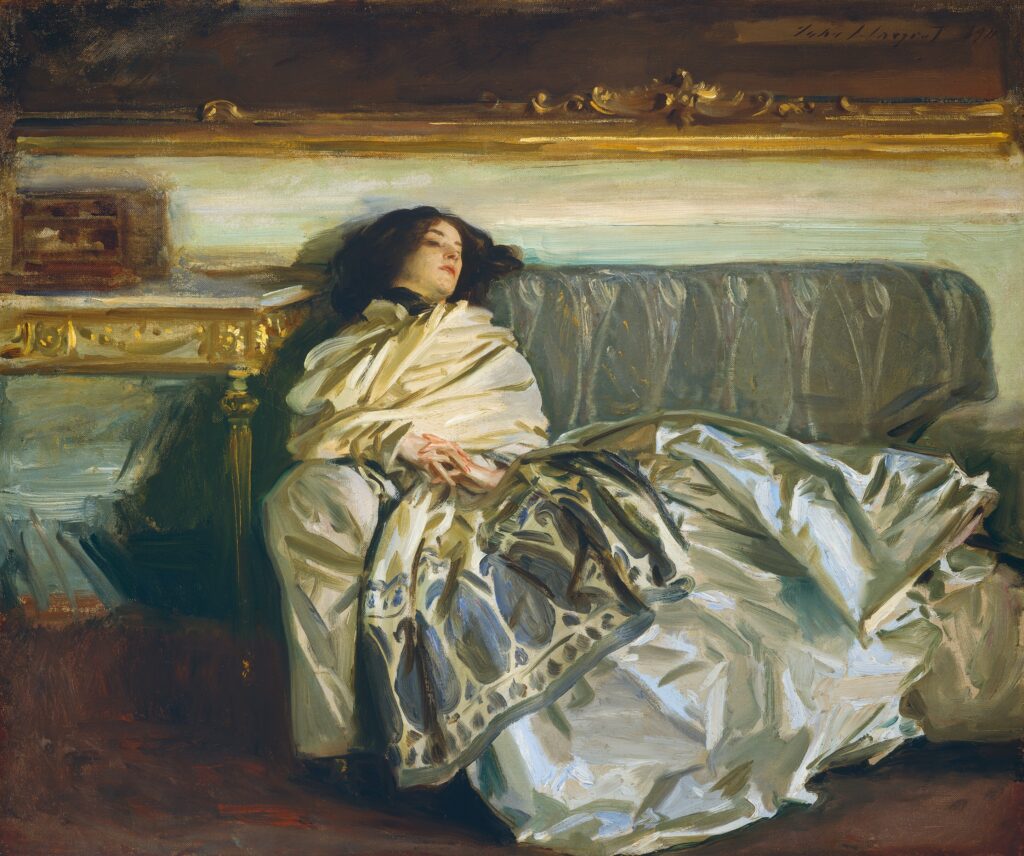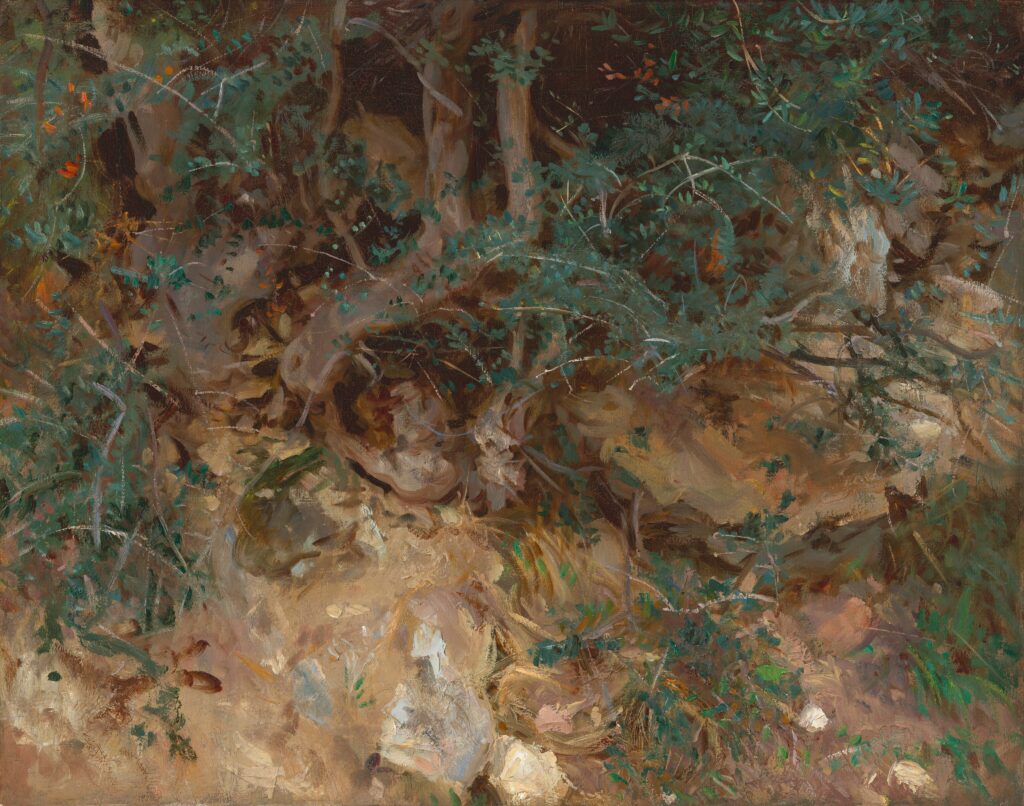At the cusp of the Twentieth Century, one name was synonymous with American portraiture: John Singer Sargent. His ability to capture the essence of his subjects was unparalleled, earning him the admiration of patrons and the respect of presidents. Yet, Sargent's artistic journey was one of evolution and personal discovery, culminating in works that transcended the expectations of portraiture.
A Glimpse into Sargent's Artistic Journey
Born to American expatriates in Italy, Sargent's childhood was a tapestry of European travels. This nomadic lifestyle continued into his painting career, enriching his artistic vocabulary. In Spain, he studied the works of Diego Velasquez, and in Giverny, he learned from Claude Monet. Sargent's versatility in styles and mediums was remarkable, but he found his true calling in realism, striving to capture the true personality and environment of his subjects. Despite his popularity, some critics and artists of the time labeled his work as passé. By 1906, Sargent's interest in pleasing an elite clientele diminished, leading him to almost abandon portraiture.
The Portraitist Everyone Desired

Sargent's rise to fame in the world of portraiture was meteoric. His skill was such that even President Theodore Roosevelt, dissatisfied with his initial presidential portrait, sought Sargent's expertise for a replacement. Sargent's decision to eventually shift his focus from portraiture to pursue his personal artistic inclinations marked a significant turn in his career.
Rose Marie Ormond: The Beloved Muse

Among the many faces Sargent painted, one stood out: his niece, Rose Marie Ormond. Described by Sargent as “The most charming girl that ever lived,” Ormond was a recurring subject in his works. Her life, marked by both strength and tragedy, deeply influenced Sargent. Her untimely death in 1918, during World War I, coincided with a period when Sargent was creating poignant war murals, possibly reflecting the impact of her life and death on his work.
Nonchaloir (Repose): A Study in Languid Elegance

Nonchaloir (Repose)," painted in 1911, is a testament to Sargent's mastery in capturing relaxed elegance. The subject, presumably Ormond, is depicted in a state of serene repose, her form and the room bathed in a subtle interplay of light and color. This painting exemplifies Sargent's skill in creating tension through color contrasts and light, showcasing his ability to convey mood and atmosphere beyond the traditional bounds of portraiture.
"Nonchaloir (Repose)" by John Singer Sargent is a fascinating study in color theory
Sargent, known for his masterful use of color, employs various aspects of color theory in this painting to create a mood, emphasize the subject, and convey depth and realism. Let's delve into some key aspects of color theory as they apply to "Nonchaloir (Repose)":
-
Color Harmony: Sargent achieves a harmonious balance in this painting through a carefully selected color palette. The use of analogous colors (colors next to each other on the color wheel) such as the yellows, greens, and blues, creates a serene and cohesive look. This harmony is soothing to the eye and helps in creating a relaxed atmosphere in the painting.
-
Warm and Cool Colors: The interplay of warm and cool colors is a significant aspect of this work. The warm tones (yellows and soft oranges) in the background and on the subject's dress create a sense of warmth and light, while the cooler tones (blues and greens) provide a contrast that adds depth and dimension to the composition. This juxtaposition also helps in drawing attention to the subject, making her the focal point of the painting.
-
Light and Shadow: Sargent uses color to depict light and shadow effectively. The lighter, warmer colors suggest areas hit by light, while the cooler, darker shades indicate shadow. This not only adds a three-dimensional quality to the painting but also contributes to the overall mood. The use of light and shadow through color enhances the languid and relaxed pose of the subject.
-
Saturation and Value: The varying saturation (intensity of color) and value (lightness or darkness of color) in the painting add to its dynamic quality. Sargent uses a range of these within his chosen colors to create visual interest and realism. The less saturated colors contribute to the sense of calmness and repose, while the areas of higher saturation draw the viewer’s eye.
-
Psychological Impact: Colors have a psychological impact, and Sargent’s choices in "Nonchaloir (Repose)" evoke specific feelings. The yellows and soft oranges evoke warmth, comfort, and relaxation, aligning with the theme of repose. The blues and greens add a sense of calmness and stability.
-
Symbolic Use of Color: While more interpretive, colors can carry symbolic meanings. In this painting, the use of earthy and natural tones could be seen as symbolizing a return to nature or a state of natural ease, aligning with the theme of rest and relaxation.
Sargent's Legacy and Continued Relevance John Singer Sargent, often pigeonholed as merely a portraitist during his lifetime, has posthumously gained recognition for the breadth and depth of his work. His paintings, both in oil and watercolor, are celebrated worldwide, gracing the halls of major museums. Sargent's art, characterized by its vivid realism and emotional depth, continues to captivate and inspire, warranting a closer look by art enthusiasts everywhere.
Exploring Sargent's Diverse Works Sargent's oeuvre was not limited to portraits. His works like "Pavement, Cairo" (1891), "Simplon Pass" (1911), and "Wild Olive Tree Roots, Valldemosa, Majorca" (1908) showcase his versatility and keen eye for landscapes and everyday scenes, further cementing his status as a master of his craft.
Conclusion In summary, John Singer Sargent’s "Nonchaloir (Repose)" is a masterful display of color theory in practice. Through his strategic use of color harmony, contrast between warm and cool colors, manipulation of light and shadow, and careful consideration of saturation and value, Sargent creates a painting that is not only visually appealing but also rich in mood and atmosphere.



